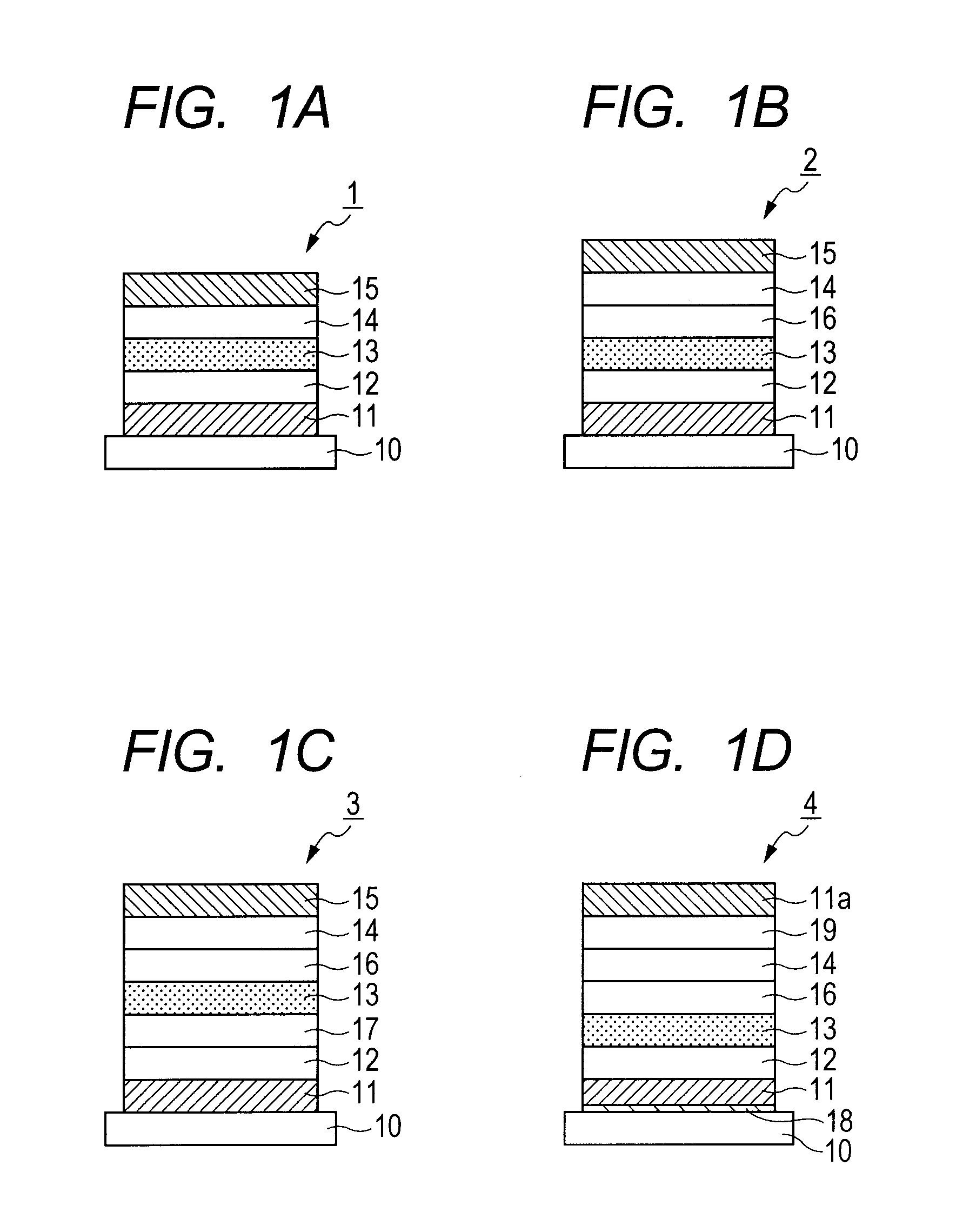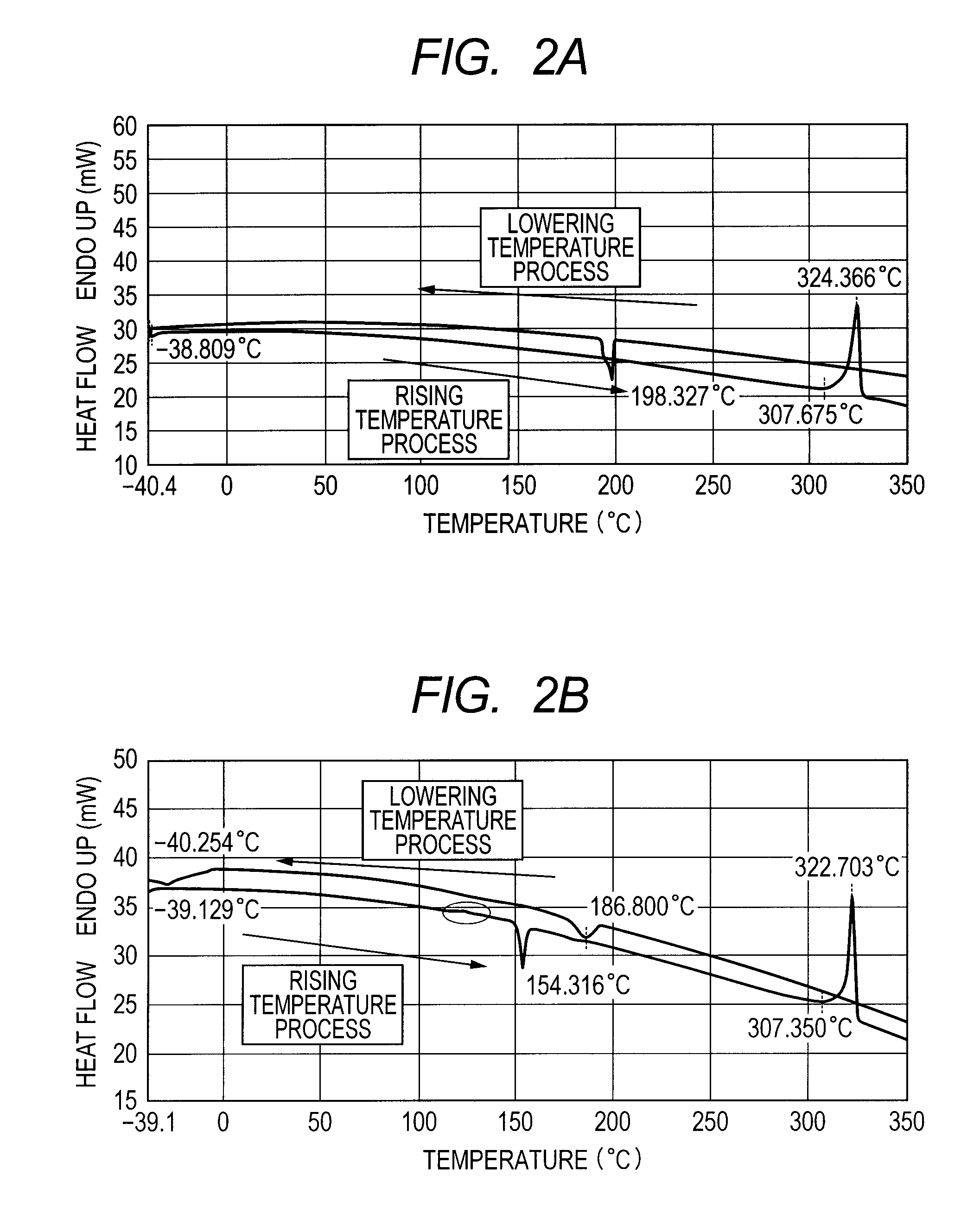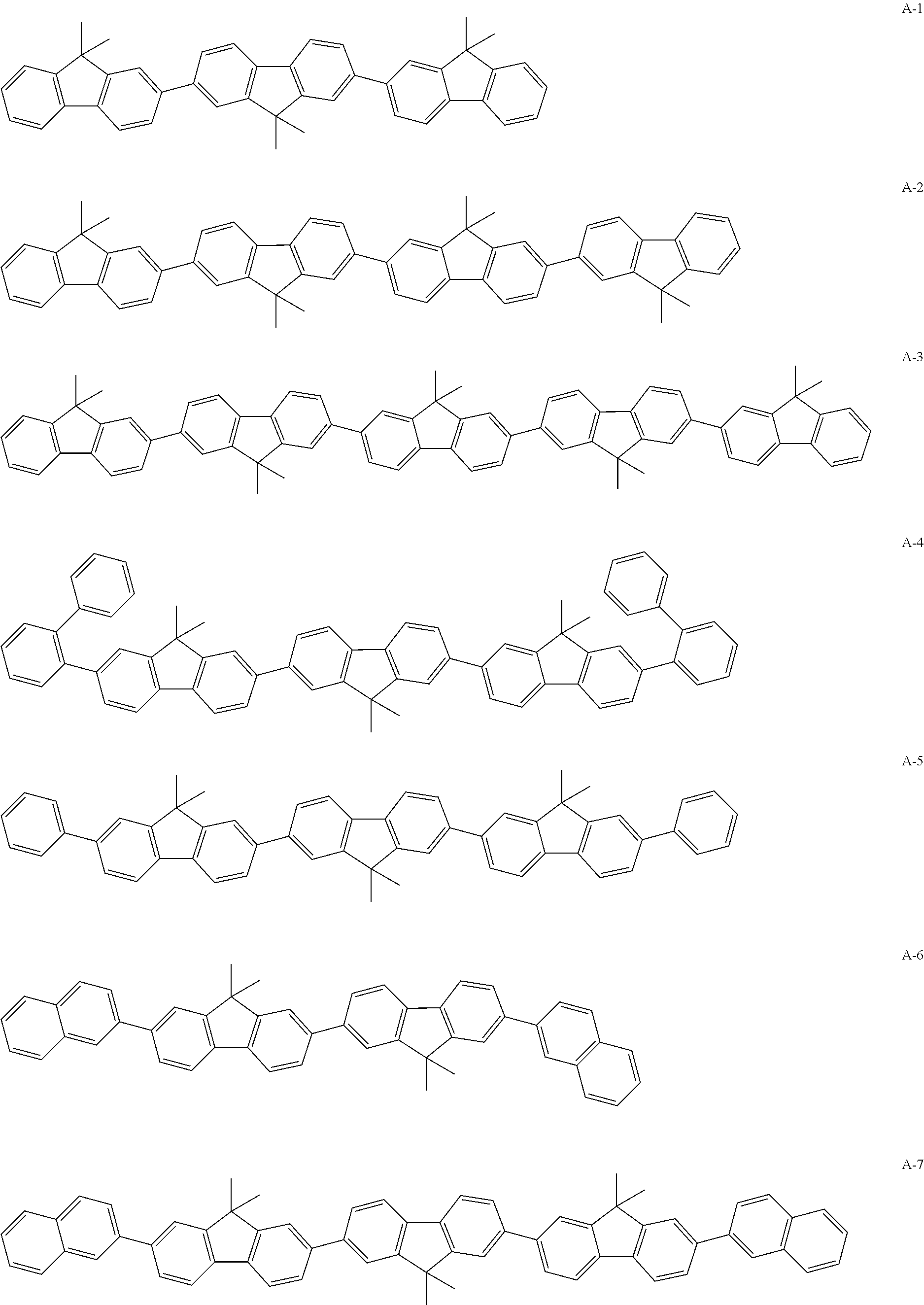Organic light-emitting device
a light-emitting device and organic technology, applied in the direction of thermoelectric device junction materials, semiconductor devices, electrical apparatus, etc., can solve the problems of reducing the luminous efficiency of each of the devices, the inability to achieve sufficient luminous efficiency for practical use, and the long life of phosphorescence emitted from each of the light-emitting materials, etc., to achieve high luminous efficiency
- Summary
- Abstract
- Description
- Claims
- Application Information
AI Technical Summary
Benefits of technology
Problems solved by technology
Method used
Image
Examples
example 1
[0098]An organic light-emitting device having the configuration illustrated in FIG. 1A was produced. First, an ITO was formed into a film on a glass substrate (the transparent substrate 10) by a sputtering method. Thus, the transparent electrode 11 (anode) was formed. In this case, the thickness of the transparent electrode 11 was set to 100 nm. Next, patterning was performed by a photolithography step so that the transparent electrode had an area of 3.14 mm2. Next, organic compound layers and electrode layers shown in Table 2 below were continuously formed in the order on the substrate on which the ITO film had been formed by performing vacuum deposition based on resistance heating in a vacuum chamber at 1×10−4 Pa.
[0099]
TABLE 2Organic compound layers andThicknesselectrode layersConstituents[nm]Hole transport layer 12Compound A240Emission layer 13H1 (host)50D1 (first dopant)A3 (seconddopant)(H1:D1:A3 =80:4:16 (weightratio)Electron transport layer 14ET225MetalFirst metalKF1electrodee...
example 2
[0113]An organic light-emitting device having the configuration illustrated in FIG. 1B was produced. First, an ITO was formed into a film on a glass substrate (the transparent substrate 10) by a sputtering method. Thus, the transparent electrode 11 (anode) was formed. In this case, the thickness of the transparent electrode 11 was set to 100 nm. Next, patterning was performed by a photolithography step so that the transparent electrode had an area of 3.14 mm2. Next, organic compound layers and electrode layers shown in Table 3 below were continuously formed in the order on the substrate on which the ITO film had been formed by performing vacuum deposition based on resistance heating in a vacuum chamber at 1×10−4 Pa.
[0114]
TABLE 3Organic compound layersThicknessand electrode layersConstituents[nm]Hole transport layer 12Compound A240Emission layer 13H2 (host)50D1 (first dopant)A2 (second dopant)(H2:D1:A2 =80:4:16 (weightratio))Hole / exciton-blockingET110layer 16Electron transport layerE...
example 3
[0117]An organic light-emitting device was produced in the same manner as in Example 1 except that Compound A1 was used instead of Compound A2 as the second dopant in Example 2.
[0118]An emission spectrum was measured in the same manner as in Example 1. As a result, an emission spectrum mainly derived from Compound D1 as a light-emitting dopant was observed. In addition, the device was evaluated for its light-emitting property in the same manner as in Example 1. Table 4 shows the result.
PUM
 Login to View More
Login to View More Abstract
Description
Claims
Application Information
 Login to View More
Login to View More - R&D
- Intellectual Property
- Life Sciences
- Materials
- Tech Scout
- Unparalleled Data Quality
- Higher Quality Content
- 60% Fewer Hallucinations
Browse by: Latest US Patents, China's latest patents, Technical Efficacy Thesaurus, Application Domain, Technology Topic, Popular Technical Reports.
© 2025 PatSnap. All rights reserved.Legal|Privacy policy|Modern Slavery Act Transparency Statement|Sitemap|About US| Contact US: help@patsnap.com



